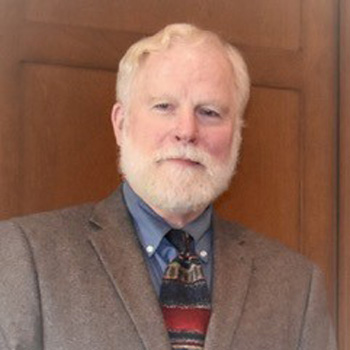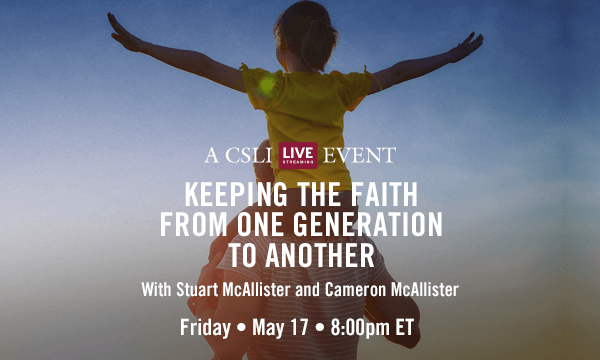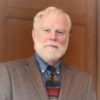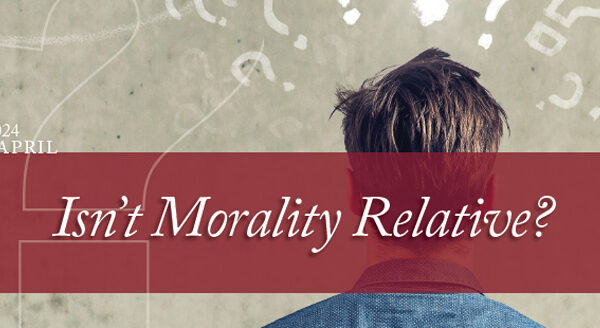Back to series



Tolkien contra Lewis on Christian Fantasy
Most discussions of J. R. R. Tolkien and C. S. Lewis stress their kinship--their shared faith, their similar scholarly interests in literature and language, their mutual love of myth, legend, and heroic romance. Scholars have tended as well to note similarities in the distinguished corpus of fantasy literature created by Tolkien and Lewis. Yet the two authors differed significantly in their approaches to fantasy literature, as evident not only in the pronouncements each one made about this genre but also in the fantasies each one actually created.
Tolkien and Lewis each produced an apologia for fantasy literature, Tolkien in "On Fairy-Stories" (Essays), Lewis in "Sometimes Fairy Stories May Say Best What's To Be Said" (On Stories). Though the two essays share a number of assumptions, it is the differences between the two that best illuminate the separate fictions created by Tolkien and Lewis.
Tolkien's "On Fairy-Stories" asserts that the unique domain of fairy stories (now more commonly called fantasy literature) is the realm of Faerie, the Perilous Realm of magic and enchantment where ordinary mortals must sometimes venture to fulfill a quest. For Tolkien an authentic fairy story is not simply an extension of our Primary World, but the creation of a plausible and self-consistent Secondary World, subject to its own laws. Tolkien suggests that too much emphasis has been placed upon "representation or symbolic interpretation of the beauties and terrors of [this] world," (Essays 51) without enough attention to sub-creation. Fantasy, for Tolkien, is at heart the "making or glimpsing of Other-worlds" (Essays 63).
The notion that an artist is a creator of alternate realities is not a new one. But Tolkien's strategy is to suggest that this very exalted model of artistic creation is best embodied, not in the novel or in the epic, but in that humble genre, the fairy-story. Just as Tolkien argued in another famous essay that Beowulf should be considered as literature, not as a linguistic artifact, here he argues that fairy-stories should be esteemed as literature, not as pastimes for children. When Edmund Wilson characterized Tolkien's own Lord of the Rings trilogy as "a children's book which has somehow got out of hand," (qtd. in Carter 3) he was voicing the very prejudice which Tolkien sought to overcome in "On Fairy-Stories."
The doctrine of sub-creation was especially congenial to Tolkien, both as a Christian and as a fantasy writer. As a Christian, Tolkien could view sub-creation as a form of worship, a way for creatures to express the divine image in them by becoming creators. As a fantasy writer, Tolkien could affirm his chosen genre as one of the purest of all fictional modes, because it called for the creation not only of characters and incidents, but also of worlds for them to exist in.
C. S. Lewis apparently subscribed to Tolkien's theory of sub-creation and he recommended "On Fairy-Stories" to those who asked him about his own views on fantasy. (Glover 30, 37) Yet Lewis never took the idea of sub-creation as much to heart as Tolkien did, and Lewis's own essay on the subject, "Sometimes Fairy Stories May Say Best What's to be Said," strikes a rather different note.
This brief but illuminating essay begins by distinguishing two sides of the writer: the Author and the Man. (Lewis used the male gender to denote the general case, as was the usual practice in his time; I follow that convention in this paragraph summarizing his essay.) The Author simply writes to release a creative impulse. He begins with an idea or a compelling image "longing for a form" for some coherent expression. Soon, however, the Man enters into the writing process with his own values and purposes, his desire to shape the writing toward some significant end. The Author may write only to please--himself or his readers--but the Man is concerned to please and instruct, to communicate something of who he is and how he views his world. Lewis illustrates the process by explaining that his own fairy stories, The Chronicles of Narnia, originated as a series of mental images that began connecting themselves into story-lines. But then, as the narratives began to take shape, Lewis saw that they could be used to imaginatively express the central truths of Christianity in a fresh way.
This dual emphasis on the Author and the Man involved in the creation of fantasy may seem only a slight variation on Tolkien's views, but it explains in large part the markedly different character of the two men's work--as well as the fact that Tolkien was never "able to enter into full sympathy" (his own words) with Lewis's fantasy stories. (Carpenter 227) Though Tolkien certainly expressed his values implicitly in The Lord of the Rings, he affirmed the Author's act of sub-creation as an end in itself. Lewis, however, agreed that a writer can't even begin without the Author's urge to create, but felt he shouldn't begin without the Man's desire to communicate his deepest sense of himself and his world.
One wonders if the differing emphases of Tolkien and Lewis on this matter are related to their different church backgrounds, Roman Catholic and Anglican respectively. Since the Reformation, Protestant aesthetic theorists have tended to discuss art in more functional terms. From early theorists like Pierre Ramee and Jonathan Edwards to a 20th century popular prophet like Frances Schaeffer, Protestants have generally viewed art in terms of the values it communicates (whether good or bad), as an expression of the artist's world-view. From the Counter-Reformation's deliberate flaunting of ornament to the work of contemporary writers such as Jacques Maritain and Hans Küng, Roman Catholics have been more willing to see the creative act as an end in itself, if not art-for-art's-sake, then perhaps more precisely art-for-God's-sake.
This spirit is embodied in the story of the medieval stone-mason working for weeks high above the ground, chiseling the ornate carvings on a cathedral tower. When asked how he could spend so much time on work no one would ever see up close, if at all, he replied, "God sees." The reader senses much the same spirit in Tolkien, working painstakingly to create a plausible Secondary World, with its own history and geography, its diversity of peoples and languages and customs, with his insistence on ironing out inconsistencies that not one reader in a million would ever notice. In fact, his biographer reports that, in later life, Tolkien did not refer to himself as a creative writer at all, but rather as chronicler of Middle Earth. (Carpenter 4).
However one attempts to explain the different views of fantasy expressed by Tolkien and Lewis, these differences are immediately evident in the creative works of the two writers. Tolkien was committed to the independence of his created Secondary World from our Primary World. In the 1500+ pages of Lord of the Rings, Tolkien studiously avoids any literary or historical references that would draw readers' attention away from his fictive world and make them think of their own. Tolkien objected to the Narnia Chronicles, and to parts of the Ransom trilogy, because Lewis unabashedly introduces characters and motifs from our Primary World into the Secondary Worlds he creates. In Perelandra, he carries Ransom off to another planet only to have him discover that the myths of our world--Mars, Venus, the Garden of Hesperides--are realities in other worlds. In the Chronicles, not only Father Christmas turns up in Narnia, but Bacchus and Silenus as well!
Obviously, Lewis did not view these allusions as artistic lapses, as the failure of a sub-creator to create an independent world. Rather he delighted in stressing the interdependence of his created Secondary Worlds and our Primary World. In the Ransom trilogy, especially, Lewis continually reminds his readers that there is nothing more natural than the supernatural, that his fantasy world is more real than we suppose. We might assume, for example, that interplanetary eldils are only creatures of Lewis's imagination. But why does he introduce himself, Lewis, as a character in the trilogy? And why does he offer references from the Bible, from classical myth, from obscure medieval scholars, suggesting that eldils are something more than creatures of his imagination? Obviously, Lewis wants us to feel some unsettling sense of the connectedness of his fictional world with our "factual" world.
This emphasis on the interpenetration of Secondary Worlds and the Primary World allowed Lewis to write explicitly Christian fantasy, without having a sense of violating the integrity of the sub-created world. Amazed by how few reviewers noticed the Christian implications of Out of the Silent Planet, Lewis quipped to a friend that "any amount of theology can now be smuggled into people's minds under the cover of romance without their knowing it." (Letters 167). One can hardly imagine Tolkien saying such a thing, even in jest. But Lewis was only half-jesting when he made such a remark. In his autobiography, Lewis describes how reading George MacDonald "baptised his imagination" by showing him "the beauty of holiness." Certainly, Lewis would have liked to perform a similar service for his readers.
Tolkien's work has no such didactic designs. In fact, many readers of The Lord of the Rings are surprised to learn that its author was a Christian. But Tolkiens' understanding of the artist's role allowed him to fulfill his Christian vocation in the very act of sub-creation of secondary worlds, without any sense of didactic purpose. (In a similar way, the composer Isaac Watts fulfilled his sense of Christian vocation by writing hymns whereas J. S. Bach fulfilled his sense of Christian vocation simply by writing music.)
Tolkien's and Lewis's different views of fantasy are suggested even by the prose styles of the two authors. Tolkien employs a deliberate folk-tale style--simple, monosyllabic, with natural, homespun imagery--and with a higher percentage of Anglo-Saxon words than virtually any other writer this century. Besides deliberately avoiding words with too obvious a "foreign" ring to them, Tolkien revived archaic Saxonisms such as fell (meaning "fierce, terrible") and leechcraft (medicine). It seems that he desired the language of his created world to have a flavor all its own--pre-industrial, certainly, but also pre-urban, pre-historic, almost pre-abstract.
Lewis's vocabulary, especially in the Ransom trilogy, but even in the Narnia Chronicles, is much more eclectic and cosmopolitan, with a much higher percentage of words taken from other languages, especially French and Latin. Lewis's prose style is, as ever, lucid, engaging, urbane, but he makes little effort to invent new languages for his new worlds.
Lewis does introduce Old Solar in the Ransom trilogy as the language of the unfallen worlds, but this seems more a concession to maintain surface plausibility than an opportunity to delight in sub-creating languages. Tolkien, on the other hand, began developing Quenya, the elvish tongue, during his undergraduate years and by the time he completed The Lord of the Rings, his invented language had a vocabulary of several hundred words, with consistent declensions and etymologies. In fact, one can "translate" most of the place-names in Middle Earth by consulting the ten-page glossary on Quenya in the Appendix to The Silmarillion.
Lewis and Tolkien's differing emphases can also be seen in how each one portrays the role of the artist within their created worlds. In Lewis's Out of the Silent Planet, Augray the sorn quips that if Ransom had perished trying to reach the sorns caves on the handramit, the hrossa, the poets of the planet, would have produced a wonderful poem about his valiant trek. This suggest their role was to weave together history into myth and legend. And the pfifltriggi at Meldilorn who does Ransom's portrait seems to function at once as artist, historian, and mythographer, whose function is not all that different from what Lewis sees himself doing as an imaginative writer.
In The Lord of the Rings, however, the poets, and musicians focus on their heroic past, very much in the Germanic traditions of bards and minstrels. The poems which punctuate the narrative are usually not a direct commentary on the action as it happens, but rather a commemoration of that people's epic heritage--celebrating another story besides the one then in progress. Tolkien's artists are not sub-creators in the literal sense, creating tertiary worlds out of the materials of the secondary world of Middle Earth; but the do tell stories far removed from the central action of the narrative.
Whether or not Tolkien's imagined artists are themselves sub-creators, this theory remains an attractive one. It offers a powerful defense of fantasy writing as a literary genre to be valorized; it offers valuable insight into the creative process; and it allows him as a Christian writer to see his imaginative work as a form of worship. Unfortunately, Tolkien's idea of Sub-Creation contains several weaknesses as a paradigm of Christian creativity.
The first problem with Tolkien's notion of Sub-creation is that he overstates his case. In seeking to find a respectable place for the genre of fantasy or fairy-story, he ends up privileging this genre over all other forms of fiction writing. Tolkien argues that the ability to create "images of things not in the primary world (if that is indeed possible) is a virtue not a vice. Fantasy, is I think, not lower but a higher form of Art, indeed the most nearly pure form, and so (when achieved) most potent" (Essays 67). Tolkien illustrates his point by saying that one can say the phrase, "the green sun," even to picture it in one's mind. But how much more difficult to imagine a universe in which such an orb was in its natural place: "To make a secondary world inside which the green sun will be credible, commanding Secondary Belief, will probably require labour and thought, and will certainly demand a special skill, and elvish craft. Few attempt such difficult tasks. But when they are attempted and in any degree accomplished then we have a rare achievement of Art: indeed narrative art, story-making in its primary and most potent mode" (Essays 68).
When Tolkien asserts that Fantasy is not a lower but a higher form of art, he needs to go beyond the idea that world-making is a bigger job than character making or story-making. It is difficult to make such quantitative judgments about creativity. One would hesitate to say that Flaubert's achievement in Madame Bovary is inferior to Dickens in Oliver Twist, because the first contributes one immortal character to world literature, while the second suggests a whole city full of characters. And we would definitely balk at the idea that Jules Verne is greater than either Flaubert or Dickens, because he bodies forth whole new worlds in his books. Obviously, factors of psychological depth, narrative structure, and moral profundity etc. must be factored into the equation.
It was Lewis who complained that popular writers frequently created new worlds and then didn't make any good use of them: "[Too often] the author leaps forward into an imagined future when planetary, sidereal, or even galactic travel has become common. Against this huge backcloth he proceeds to develop an ordinary love-story, spy-story, wreck-story, or crime-story. This seems to me tasteless. Whatever in a work of art is not used is doing harm. The faintly imagined scene and properties only blur the real theme and distract us from any interest it might have had" (On Stories 57).
This discussion of how successfully writers are in creating genuine otherworlds touches on a second problem with the theory of Sub-creation: how possible is it really to create secondary worlds, not dependent on this one? C. S. Lewis addressed this issue in a letter to Sister Penelope: "'Creation' is applied to human authorship seems to me entirely misleading term. We rearrange elements He has provided. There is not a vestige of real creativity de novo in us. Try to imagine a new primary colour, a third sex, a fourth dimension, or even a monster which does not consist of bits and parts of existing animals stuck together. Nothing happens. And that surely is why our works (as you said) never mean to others quite what we intended: because we are recombining elements made by Him and already containing His meanings" (Letters 203).
Here Lewis expresses a great deal of skepticism about how much the Christian author's work really resembles the ex nihilo creation of his Maker. In his review of Lord of the Rings, Lewis alludes to Tolkien's idea of Sub-creation and offers prodigal praise of Tolkien not just as a creator of a story, but of a world. Lewis explains that Tolkien deliberately tried to keep his direct debt to the actual world we know to a minimum, adding in a shrewd parenthesis, "there are of course subtler kinds of debt" (On Stories 84).
Tolkien stressed the importance of creating independent worlds so much that some readers have the impression that his Middle Earth is a wholly original creation. But Tolkien confessed that it is largely derived from his childhood hikes in the English countryside in the counties least touched by industrialism. The climate, topography, and local customs of the Shire and other parts of Middle Earth are unmistakably English.
Tolkien did not make obvious literary and mythological allusions the way Lewis did, but his debt to predecessor texts is perhaps no less great. The whole of The Lord of the Rings is steeped in Nordic myth, legend, and folklore. Middle Earth itself is a translation of Old Norse "midgard." And the whole panoply of wizards, elves, dwarfs, and dragons is familiar to readers of Germanic lore. Names like Gandalf and Thorin Oakenshield come directly from the Elder Eddas, and the word 'orcs' can be found in Beowulf. The names and language of the Riders of Rohan are undisguised Anglo-Saxon. And key motifs such as golden rings of power, talismans of invisibility, and broken swords to be mended when the hero returns are all to be found in the Teutonic literature Tolkien so loved.
All of this emphasis on sources is not meant to derogate Tolkien's imaginative achievement in The Lord of the Rings, where his interweaving of diverse motifs and peoples is nothing less than brilliant. However, this does call into question whether the doctrine of Sub-Creation, with it emphasis on the God-like creativity of the author, does not partake of the Romantic cult of originality. Lewis, in contrast, emphasized that a Christian author should feel a freedom to be unabashedly unoriginal. In his address "Christianity and Literature," Lewis notes that most common terms of valorization have to do with creativity, spontaneity, bursting the bounds of existing traditions. He summarizes the existing assumption: 'Great authors are innovators, pioneers, explorers; bad author bunch in schools and follow models" (Reflections 3). He contrasts this with a classical and Christian view that "an author should never conceive himself as bringing into existence beauty or wisdom that did not exist before, but simply and solely some reflection of Eternal Beauty and Wisdom" (Reflections 7). In his reading of the New Testament, Lewis finds that "originality" is quite plainly the prerogative of God alone," concluding that "Of every idea and of every method the Christian writer will ask not "Is it mine?' but 'Is it good?'" (Reflections 9)
The juxtaposition of human creativity with divine creativity raises a third concern about Tolkien's theory of Sub-creation. Though he touches lightly on the idea, Tolkien suggests that engaging one's creativity is an imitation of God and a form of worship. Dorothy Sayers took the analogy much further in The Mind of the Maker, where she argues that the deo imago in humans is creativity. In trying to define what it means to be made in the image of God, Sayer examines the relevant biblical narratives: "Had the author of Genesis anything particular in his mind when he wrote? In the passage leading up to the statement about man, he has given no detailed information about God. Looking at man, he sees in him something essentially divine, but when we turn back to see what he says about the original upon which the "image" of God was modeled, we find only the single assertion, 'God created.' The characteristic common to God and man is apparently that: the desire and the ability to make things" (34). Sayers asserts that "it is the artist who , more than other men, is able to create something out of nothing" (39). She goes on to develop the analogy between human makers and their Maker, noting that one's original idea or reason for writing is like the Father, the energy or activity or fleshing out the idea in words in like the Son, and the reception or returned energy from a community of readers is like the Spirit.
This is an evocative parallel, but a potentially dangerous one, if not balanced out by other Christian truths. Human creativity is indeed a god-like trait. But as Lewis notes in The Four Loves, one can be like God without ever drawing near unto God. Many god-like traits are only instrumental goods. They can bring great evil if not chastened by the most indispensable god-like trait: goodness. Hitler was god-like in his power over others, but it was a power like anti-Christ. Intelligence, beauty, even courage all partake of God's nature, but they may be perverted to the most diabolical ends.
Creativity in general, or the Sub-creation of worlds in particular, is much the same. Milton's Satan is a sub-creator when he calls Pandemonium into being, but this is obviously neither an act of worship nor fealty. And how many other artists could be named whose work is technically splendid and imaginatively vast, but whose moral vision is in violent opposition to one Christian readers could affirm?
This problem can be seen in C. S. Lewis's mixed attitudes toward David Lindsay, the author of Voyage to Arcturus. On the one hand, Lewis said, "He is the first writer to discover what other planets are really good for in fiction. No mere physical strangeness or merely spatial distance will realize the idea of otherness which is what we are always trying to grasp in a story about voyaging through space: you must go into another dimension. To construct plausible and moving 'other worlds' you must draw on the only real 'other world' we know, that of the spirit" (Of Other Worlds 12). On the other hand, Lewis was not at all attracted to the theme of the Voyage to Arcturus. He pronounced the book to be "on the borderline of the diabolical [and] so manichean as to be almost satanic" (Qtd. in Sayer 153).
It can be seen that, however successful Lindsay may be as a Sub-creator, his achievement must be measured--at least by Christians--by other criteria beyond his skill as as fashioner of imagined secondary worlds. Tolkien seems to have recognized this problem when he appended an epilogue to his essay on fairy stories. In this, his final word on the subject, his kinship with Lewis again emerges in his discussion of "sanctified sub-creation":
"Probably every writer making a secondary world, a fantasy, every sub-creator, wishes in some measure, to be a real maker, or hopes he is drawing on reality. It is not only a 'consolation' for the sorrow of this world, but a satisfaction, and an answer to that question 'Is it true?' The answer to this question that I gave at first was 'If you have built your little world well, yes: it is true in that world.' That is enough for the artist (or for the artist part of the artist). But in the 'eucatastrophe' [happy ending] we see that the answer may be even greater--that it may be a far-off gleam or echo of evangelium in the real world.
The Gospels contain a fairy-story, or a story of a larger kind, which embraces all the essence of fairy-stories. The Birth of Christ is the eucatastrophe of human history. The resurrection is the eucatastrophe of the story of the Incarnation. This story begins and ends in joy.
Christian joy, the Gloria, is pre-eminently high and joyous. Because this story is supreme; and it is true. Art has been verified. God is the Lord, of angels, and of men--and elves. Legend and history have met and fused" (Essays 83-84).
WORKS CITED
Carpenter, Humphrey. Tolkien: A Biography. New York : Ballantine, 1977.
Carter, Lin. A Look Behind the Lord of the Rings. New York: Ballantine, 1969.
Essays Presented to Charles Williams. Ed by C. S. Lewis. Grand Rapids, MI: Eerdmans, 1970.
Glover, Donald E. C. S. Lewis: The Art of Enchantment. Athens, OH: Ohio UP, 1981.
Lewis, C. S. On Stories and Other Essays on Literature. Ed by Walter Hooper. New York : Harcourt Brace Jovanovich, 1982.
Sayer, George. Jack: C. S. Lewis and His Times. San Francisco : Harper and Row, 1988.
Sayers, Dorothy. The Mind of the Maker. Cleveland: World, 1964.

David C. Downing
AuthorDavid C. Downing, Author, is the Co-Director of the Marion E. Wade Center at Wheaton College in Illinois. He earned his PhD from UCLA and has written four scholarly books on C.S. Lewis: Planets in Peril (1992), The Most Reluctant Convert (2002), Into the Wardrobe (2005), and Into the Region of Awe (2005.) Downing also provided a critical introduction and over 400 explanatory notes to the new edition of C.S. Lewis's The Pilgrim's Regress, originally published in 1933 and reissued by Eerdmans in the Wade Center Annotated Edition (2014). Downing is a consulting reader on C.S. Lewis for the Publications of the Modern Languages Association (PMLA), as well as Christian Scholars Review and Religion and Literature.

 COPYRIGHT: This publication is published by C.S. Lewis Institute; 8001 Braddock Road, Suite 301; Springfield, VA 22151. Portions of the publication may be reproduced for noncommercial, local church or ministry use without prior permission. Electronic copies of the PDF files may be duplicated and transmitted via e-mail for personal and church use. Articles may not be modified without prior written permission of the Institute. For questions, contact the Institute: 703.914.5602 or email us.
COPYRIGHT: This publication is published by C.S. Lewis Institute; 8001 Braddock Road, Suite 301; Springfield, VA 22151. Portions of the publication may be reproduced for noncommercial, local church or ministry use without prior permission. Electronic copies of the PDF files may be duplicated and transmitted via e-mail for personal and church use. Articles may not be modified without prior written permission of the Institute. For questions, contact the Institute: 703.914.5602 or email us.
-
Recent Podcasts
A Welcome Change in Apologetics
by Randy Newman, Aimee Riegert on April 19, 2024We’re burdened for our friends who don’t know...Read More
-
Questions That Matter Podcast – Samuel James and Digital Liturgies
by Samuel James, Randy Newman on April 19, 2024
-
The Side B Stories – Dr. James Tour’s story
by Jana Harmon, James Tour on April 12, 2024
-
Recent Publications
Isn’t Morality Relative?
by Christopher L. Reese on April 1, 2024It is widely accepted in the Western world...Read More
-
Do Muslims and Christians Worship the Same God?
by Andy Bannister on March 1, 2024
-
Artificial Intelligence and Its Impacts on Humanity
by John Lennox on February 13, 2024
0
All Booked
0.00
All Booked
0.00
All Booked
22140
GLOBAL EVENT: Keeping the Faith From One Generation To Another with Stuart McAllister and Cameron McAllister, 8:00PM ET
https://www.cslewisinstitute.org/?event=global-event-keeping-the-faith-from-one-generation-to-another-with-stuart-mcallister-and-cameron-mcallister-800pm-et&event_date=2024-05-17®=1
https://www.paypal.com/cgi-bin/webscr
2024-05-17

Next coming event
Days
Hours
Minutes
Seconds
GLOBAL EVENT: Keeping the Faith From One Generation To Another with Stuart McAllister and Cameron McAllister, 8:00PM ET
On May 17, 2024 at 8:00 pmSpeakers

David C. Downing
Author
Team Members

David C. Downing
AuthorDavid C. Downing, Author, is the Co-Director of the Marion E. Wade Center at Wheaton College in Illinois. He earned his PhD from UCLA and has written four scholarly books on C.S. Lewis: Planets in Peril (1992), The Most Reluctant Convert (2002), Into the Wardrobe (2005), and Into the Region of Awe (2005.) Downing also provided a critical introduction and over 400 explanatory notes to the new edition of C.S. Lewis's The Pilgrim's Regress, originally published in 1933 and reissued by Eerdmans in the Wade Center Annotated Edition (2014). Downing is a consulting reader on C.S. Lewis for the Publications of the Modern Languages Association (PMLA), as well as Christian Scholars Review and Religion and Literature.





